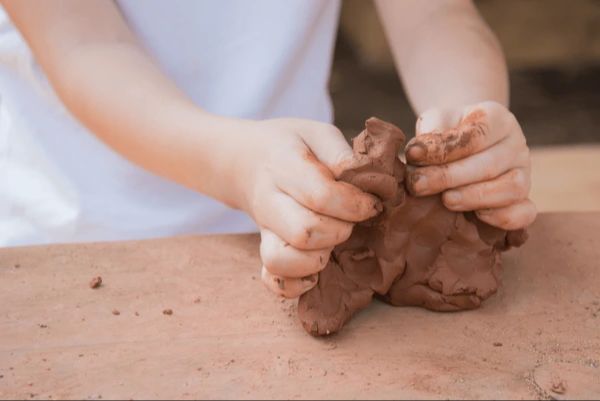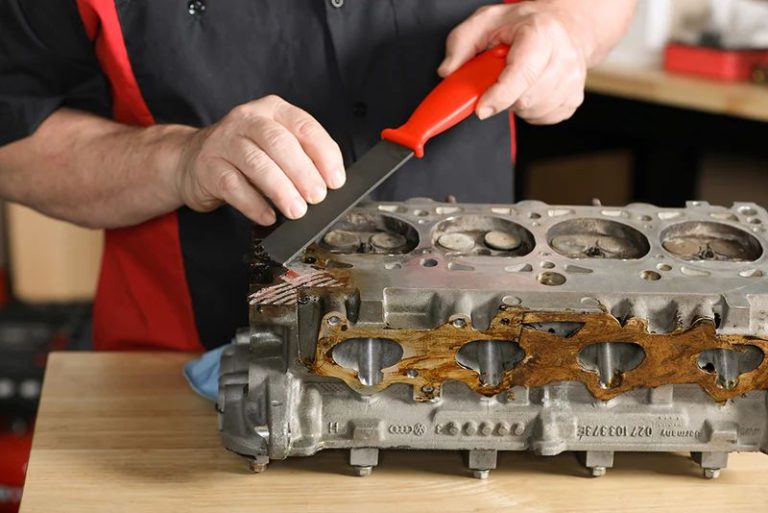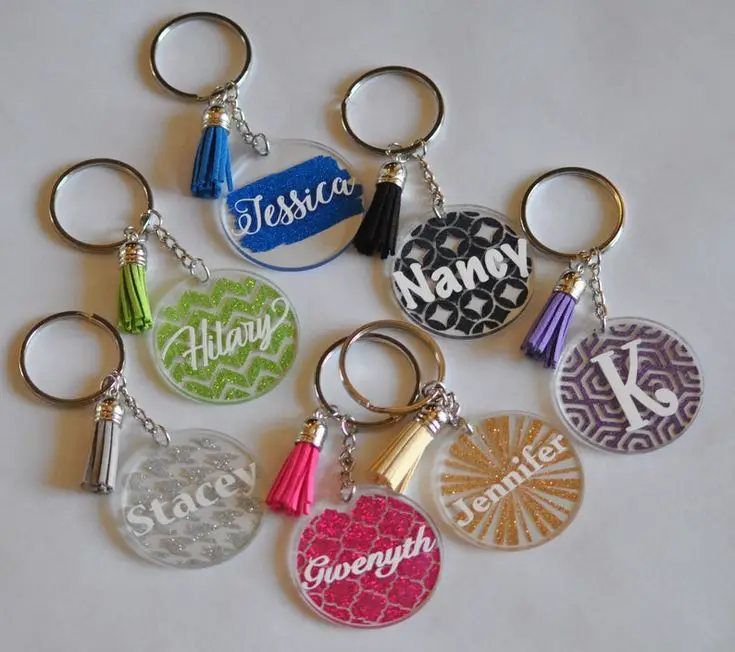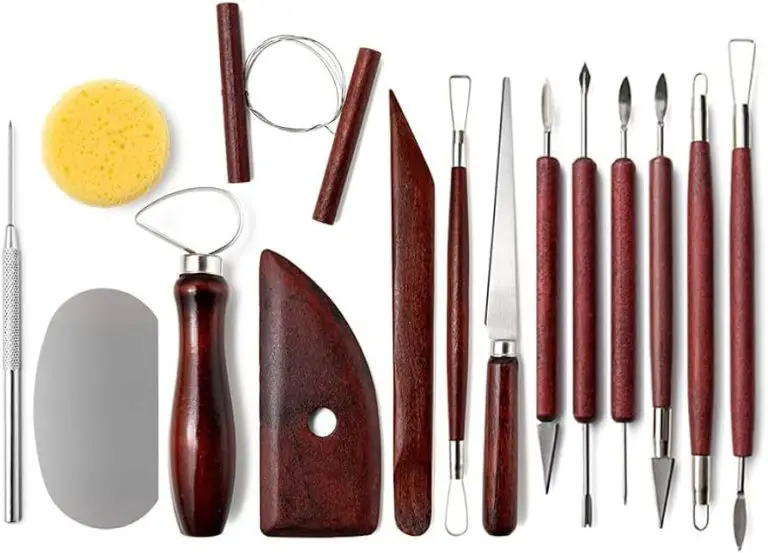Clay Creations For Little Artists: Projects To Spark Imagination
Clay is a fun, creative, and educational artistic medium for children of all ages. Working with clay helps develop fine motor skills, hand-eye coordination, creativity, focus, and imagination. The tactile experience allows children to explore shapes, textures, and 3D forms in an engaging, hands-on way. Clay is an open-ended material that can be molded into anything kids can imagine. It sparks curiosity, problem-solving skills, and self-expression. With adult supervision, clay is a safe, non-toxic material appropriate for preschoolers through tweens. Basic air-dry clays are inexpensive and easy to use. More advanced clays like polymer clay allow for more detailed creations. This guide will provide clay projects perfect for little artists, from beginner to advanced, while nurturing creativity and building lifelong skills.
Basic Clay Projects
Clay is a wonderful medium for letting young children explore their creativity. Some simple projects are perfect for preschoolers and kindergarteners who are just starting to work with clay. These basic clay creations allow kids to get familiar with the clay and have fun in the process.
Play dough is a great introduction to clay for little ones. Let them squish, roll, and shape colorful clay into anything they imagine. Give them cookie cutters, straws, and other safe objects to press shapes into the clay. Show them how to roll clay into balls and long “snakes.” Play dough is an open-ended activity that builds fine motor skills.
Clay snakes are easy and satisfying to make. Have children roll pieces of clay into long coils, adding new clay as needed. They can make short and long snakes, skinny snakes or fat snakes, coiled or straight. Encourage them to make patterns by alternating colors. Clay snakes are fun to shape into letters, numbers and animal creations.
Pinch pots allow beginning clay artists to create simple vessels. Show children how to pinch clay with their fingers and thumbs to form the rough shape of a pot. They can then use tools to refine the rims and smooth the clay. Let pots air dry before they paint designs on them with acrylics. Pinch pots build hand strength and let kids create useful objects.
These basic clay projects allow young children to explore the creative possibilities of clay without getting bogged down in complex techniques. As they gain experience, they’ll be ready to try more intricate clay creations.
Themed Creations
Kids love making clay creations that bring their favorite themes to life. Some popular themes for clay projects include animals, food, nature, and transportation. Sculpting themed creations allows kids to build worlds and stories around their artwork.
Animals are a classic subject for clay. Kids can sculpt creatures like dogs, cats, dinosaurs, elephants, giraffes, and more. Adding details like eyes, ears, tails, and textured skin brings the animals to life. For more advanced projects, kids can create animal habitats and full scenes with multiple clay figures interacting. Refer to this Pinterest board for animal clay inspiration.
Clay food items allow kids to pretend play with their creations, setting up kitchens, restaurants, picnics, and other scenarios. Pizza, donuts, ice cream cones, fruit, and vegetables are all fun to sculpt. Details like imprinting a shell shape for taco shells or adding clay “sprinkles” to donuts take food projects up a notch. Check out this article for food-themed clay ideas.
Nature is an calming theme for clay projects. Kids can make trees, flowers, leaves, acorns, mushrooms, and more. Texturing clay with real leaves or sticks makes creations look more realistic. Creating miniature nature scenes brings the outdoors inside. Get inspiration from this Pinterest board.
Transportation like cars, planes, trains, and boats allows kids to imagine exciting adventures. Add details like windows, wheels, sails, or propellers to bring the vehicles to life. Interlocking clay tracks, roads, and landscape encourage storytelling and play. Learn how to make transportation-themed projects here.
Texture and Shape
Clay is a wonderfully tactile material that allows kids to explore different textures and shapes. Some key techniques for creating textures and shapes in clay include:
Rolling – Kids can roll clay into balls or snakes, or use a rolling pin to flatten it out into smooth sheets or textured slabs. Rolling clay teaches fine motor skills. Let them experiment with different thicknesses and textures [1].
Cutting – Using cookie cutters, knives, or scrapers, kids can cut shapes out of rolled sheets of clay. They can make geometric or organic shapes. Cutting stimulates hand-eye coordination [1].
Stamps – Let kids press found objects, store-bought clay stamps, or their own homemade stamps into clay to create patterns and textures. Encourage them to experiment with different pressures and angles [2].
Molds – For more defined shapes like animals or letters, kids can press clay into silicone molds. Release the clay to reveal the embossed shape. Molds build shape recognition skills.
Decorating Clay
Decorating clay creations is a fun way for little artists to add their own personal flair. There are endless possibilities when it comes to decorating clay. Some simple yet creative ways to decorate include using paint, glitter, beads, and collage.
Acrylic paints work wonderfully on clay and allow kids to paint designs, patterns or pictures onto their clay creations. Paint pens can also be used to add fine details and accents. Encourage kids to let their creativity shine through with paint.
Another way to decorate is by adding glitter. Mixing glitter into the clay is an option, but glue can also be used to attach glitter once the clay has been shaped and hardened. Glitter comes in so many colors and adds a festive touch.
Glue can additionally be used to attach beads, buttons, pom poms, googly eyes and other embellishments. Decorating clay with a collage of found objects opens up even more possibilities for creativity. Sequins, feathers, leaves, sticks, fabric scraps and more can be incorporated.
Let the kids imagination run wild when decorating their clay creations. From simple designs to elaborate collages, decorating is a chance to personalize clay projects and make each one truly unique.
Working with Air-Dry Clay
Air-dry clay is a fun and easy modeling material for young artists. Made from natural ingredients like clay, cellulose, and water, air-dry clay is safe and non-toxic. It’s an affordable option compared to other clays since it doesn’t require baking or firing in a kiln. Here’s what you need to know about working with air-dry clay:

Properties
Air-dry clay is lightweight and pliable when first opened, similar to playdough. It’s easy for little hands to squeeze, roll, cut, and shape. As air-dry clay starts to dry, it will harden and become firmer. The drying time depends on factors like the thickness of the clay and humidity, but projects are usually dry within 24-48 hours.Crayola’s air-dry clay is a popular choice for kids and classrooms.
Handling
Keep air-dry clay moist and malleable by storing any unused clay in an airtight container or plastic bag. If the clay starts to dry out, add a few drops of water and knead it until pliable again. Avoid over-handling the clay when sculpting, as this can cause air bubbles. Air-dry clay is best rolled out to 1/4 inch thickness or less.
Drying
Allow air-dry clay sculptures to dry completely before handling. Drying times range from overnight for thin pieces to several days for thicker projects. Avoid placing clay in direct sunlight, as this can cause cracking. Gently turn pieces over halfway through drying. Holes and enclosed areas will take longer to fully dry.
Sealing
Once thoroughly dry, air-dry clay is quite fragile and porous. Apply a sealer like decoupage, varnish or polyurethane for added strength and durability. Avoid water-based sealers, which can dissolve the clay. Multiple thin coats are better than one thick coat when sealing. Allow each coat to fully dry before adding the next.
Working with Polymer Clay
Polymer clay is a type of modeling clay that is popular for kids’ craft projects. It is an air-dry clay that cures when baked in a regular oven. Polymer clay remains flexible and durable once hardened through baking. Popular brands of polymer clay include Sculpey and Fimo.
Polymer clay is safe for kids to use. However, there are some safety precautions to follow. Make sure kids work in a well-ventilated area when baking polymer clay, as it can emit fumes. Supervise closely to prevent accidental burns. Also, avoid contamination by dedicating tools and surfaces specifically for polymer clay.
Polymer clay enables all sorts of creative projects for kids. They can sculpt miniature objects, make jewelry, or decorate keepsakes. Mixing colors and textures of polymer clay brings more possibilities. With adult supervision for baking, polymer clay provides an engaging, hands-on material for children to mold their imaginations.
Troubleshooting Issues
Clay projects can sometimes run into problems like cracking, breaking, sticking, or issues with drying properly. Being aware of some common troubleshooting techniques can help get projects back on track.
If a clay project develops cracks or starts to break apart, there are a few options to try and repair it. Make sure clay does not dry out too quickly by having it wrapped when not working on it. To repair cracks or breaks, try liquid clay which acts as a glue by smoothing it over the damaged area. Let it dry completely before continuing to work on the project. Small cracks can also be filled by rubbing clay dust or slip into them.
Clay sticking to surfaces and hands can be frustrating. Try rubbing a light layer of oil or Vaseline onto surfaces before starting. When clay sticks to hands, stop working it and let hands fully dry before continuing. Using tools instead of fingers directly can also cut down on sticking.
If air dry clay is drying too quickly, store it in an airtight container or plastic bag, adding a damp paper towel to help retain moisture when not in use. Slow down the drying process by working in shorter time periods. Polymer clay can start to dry and crack while working it. To remedy this, condition the clay by kneading it or running it through a clay conditioner/pasta machine.
For more tips on troubleshooting clay project issues, check out this helpful guide: https://potterycrafters.com/11-problems-centering-clay-and-easy-ways-to-fix-them/
Developing Creativity
Working with clay allows children to tap into their imagination and creativity. Molding clay is an open-ended activity with endless possibilities, which encourages self-expression. Children can create anything they envision out of clay, whether it’s a simple shape or an elaborate sculpture. This gives them an outlet to convey their ideas, thoughts, and feelings through their art.
Clay also helps develop fine motor skills as children manipulate and shape the clay with their hands and fingers. Pinching, rolling, smoothing, and imprinting the clay enhances dexterity, strength, and precision in young hands. Creating clay figures and shapes takes concentration and control. As children gain experience, their motor skills improve to allow more intricate clay creations.
Parents and teachers can foster creativity by providing basic modeling clay or air-dry clay, along with kid-safe tools for imprinting shapes and textures. Avoid giving specific instructions or examples. Allow children freedom to sculpt whatever they imagine. Ask open-ended questions about their work and let them describe their process. Display finished pieces to validate their efforts. Rotate clay projects with drawing, painting, and other mediums for a well-rounded experience.
According to research from Care by Clay (https://carebyclay.com/), open-ended clay play encourages problem solving as children figure out how to execute their ideas. It also builds confidence as they take pride in designing and completing their own clay artwork.
Inspiring a Lifelong Hobby
Creating art with clay can spark a lifetime of creativity and imagination in children. Studies show that the benefits of arts and crafts for kids include boosting cognitive skills, improving self-expression and self-esteem, and developing fine motor skills (https://www.fiestacrafts.co.uk/blog/article.php?DOC_INST=23). An artistic hobby allows kids to bring their imagination to life in a tactile way.
To keep clay projects fun and engaging as your child grows, provide a variety of materials for sculpting and decorating. Polymer clay offers bright colors for them to mix and shape. Acrylic paints add detail to finished pieces. Let them create characters from their favorite books and movies. Display their artwork proudly to encourage their artistic development.
The sense of accomplishment from creating their own clay masterpieces can inspire a lifelong appreciation for art. Nurture their creativity by allowing plenty of free sculpting time without structured projects. Occasional trips to a pottery studio or ceramics class introduces new techniques. Most importantly, let the process be driven by their imagination rather than aiming for perfect results.




